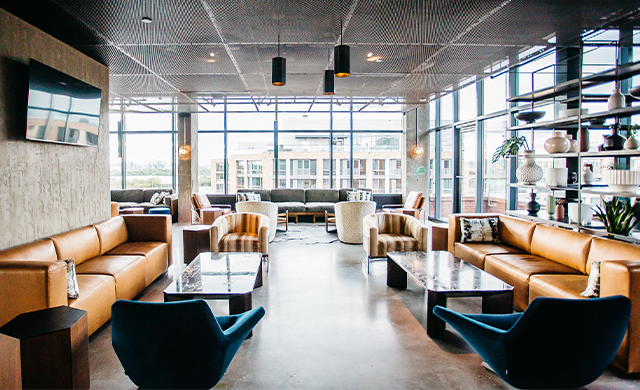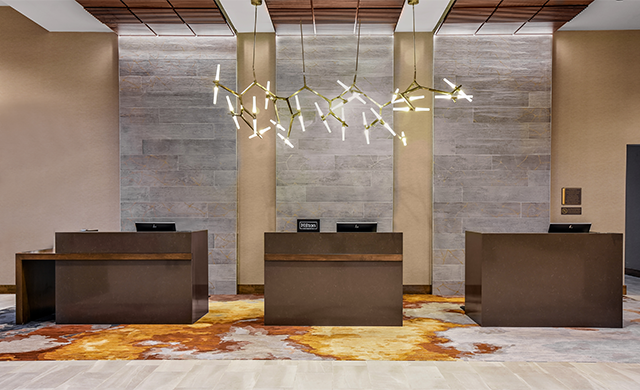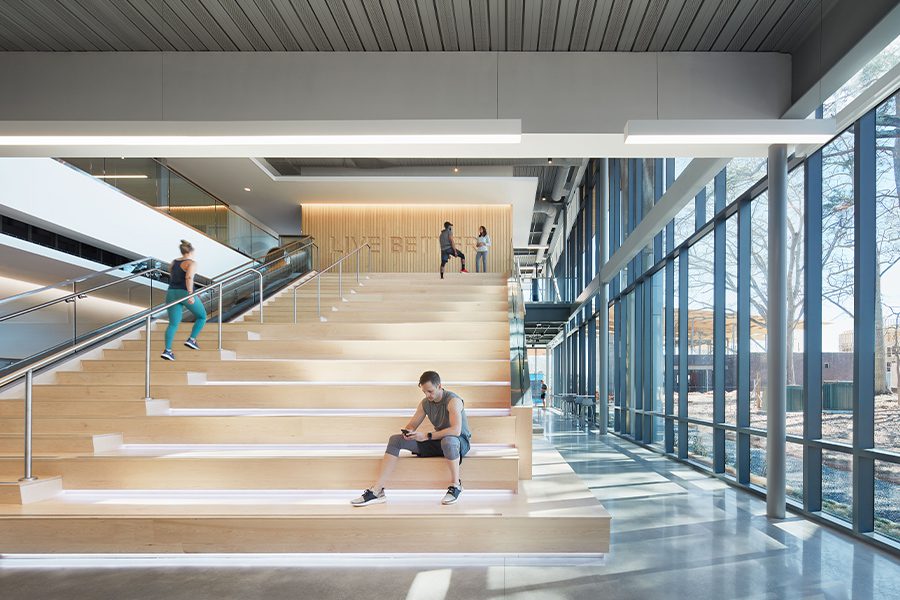As the COVID-19 pandemic continues on longer than all had hoped, and with no sure sign of when a vaccine might become widely available, the hospitality industry is adapting to immediate design needs. “The post-COVID-19 design process requires designers to [navigate] every space within the hotel or resort on a micro scale to determine the particular touchpoints that guests favor,” says Lesley Hughes Wyman, partner and principal at Dallas-based MatchLine Design Group.
With this rigorous approach, firms are speccing products with fresh eyes on health and safety. Proving trickier, however, is eliminating harmful invisible pathogens and microorganisms. Though the use of antimicrobials had seen an uptick even before the coronavirus hit, there’s debate around their effectiveness in the wake of the pandemic. Chicago-based Perkins and Will, a design firm with a robust healthcare practice, has been researching antimicrobials since 2016. “The majority of these are put into products as preservatives,” explains associate principal Mary Dickinson. “To date, we haven’t had any published studies outside of a lab that antimicrobials are reducing disease.” She notes that the FDA ruled against companies using antimicrobials in soaps, and that they had no positive impact in hospital gowns or mattresses. “You have antimicrobials that are addressing some of the bacteria, but they’re marketing themselves [otherwise], making people feel as though they can control the virus,” she adds.

12 Stories bar in Washington, DC, with interiors from //3877
Copper, on the other hand, is known to be able to kill viruses, and, with careful integration, may prove a solution in certain areas. But, along with silver, imbedding copper in textiles and rugs leads to more questions. “The concern here is that when those products are laundered, those metals release in the water stream,” says Brenda Smith, Perkins and Will associate principal, health. “We’ve chosen to look at places where you can imbed those materials in a stable way,” including in hardware and sinks.
For David Tracz, partner and principal at Washington, DC’s //3877, the reimagined public restroom includes increased demand for self-contained basins that include drying functions, and stalls that feature sinks and dryers to reduce time spent near other guests. Still, optics play their part in every space. “The priority,” he says, “is making patrons feel comfortable—just seeing plastic dividers, UV lights, sanitization stations, prominent signage, and touchless features eases discomfort.”
But as Hughes Wyman points out, “not everyone can order brand-new furniture to adapt to the new normal.” Not every solution is viable in the face of reduced budgets or even scientific research. The ability to adapt, however, is key. “Don’t look for the silver bullet, but let’s design in a way that’s going to have longevity,” Dickinson says. “Today isn’t the last of it. New antimicrobials will come out. We just have to do our due diligence.”

The MatchLine Design Group-designed Embassy Suites by Hilton Jonesboro Red Wolf Convention Center
Photos courtesy of Perkins and Will, //3877, and MatchLine Design Group
This article originally appeared in HD’s 2020 Product Marketplace issue.



